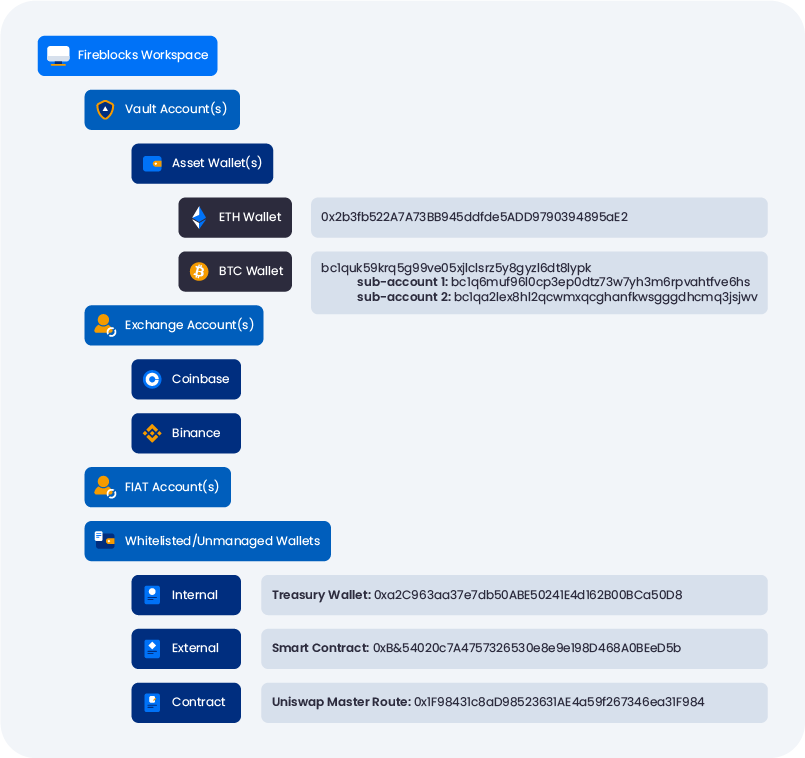Fireblocks Object Model
The Fireblocks platform can be viewed as consisting of the following components:

Fireblocks Workspace
Each unique instance of Fireblocks is called a workspace.
Vault accounts
A Vault account is an easy way to separate and maintain security boundaries across assets.
Vault accounts store your asset wallets on the Fireblocks platform. Any user with the appropriate permissions can create a vault account since that is not a workspace action that requires approval.
The Vault structure for your application you're building on top of Fireblocks can either be 'Segregated' or 'Omnibus'.
Segregated
With this vault structure, each user of your application is assigned individual vault accounts.
- For example, you may have vault accounts labeled as User #1, User #2, User #3, etc... each of which maps to a user of the application you are building on top of Fireblocks.
Omnibus
With this vault structure, all users of your application are assigned one, or several, centralized vault accounts.
- For example, you may have a single vault account labeled as Omnibus, where all of your user's funds and assets are swept for a single withdrawal.
Vault wallets
Vault wallets are used to manage internal deposit addresses. Each vault wallet contains at least one deposit address for its asset type.
Each vault account can hold any number of assets supported by Fireblocks, including multiple deposit addresses for blockchains that support it, such as UTXO-based chains like BTC. Depending on the asset type, different wallets may support multiple address types or formats. Each vault wallet is assigned to a single digital asset supported by Fireblocks.
Your workspace contains multiple assets from different blockchains. You can use one of the existing assets or add a new asset to your workspace and use it as an vault wallet.
Learn how to create vault accounts and vault wallets using the Fireblocks API.
Exchange accounts
To transfer funds securely to/from exchanges, you'll need to integrate an exchange account by adding your API credentials for those exchanges.
Fiat accounts
To transfer fiat through one of our integrated fiat providers, you need to explicitly add your fiat provider's API credentials within your desired workspace fiat account.
Whitelisted/Unmanaged wallets
Note:The terms "whitelisted wallets" and "unmanaged wallets" are used interchangeably to describe wallets that are external and not under Fireblocks' management. In certain areas of the system, such as the API and Webhooks, these wallets are referred to as unmanaged wallets.
Whitelisted or unmanaged wallets are an additional security measure for interacting with various blockchain addresses. They can be named how you prefer and marked as either 'internal', 'external', or 'contract'.
Updated 18 days ago